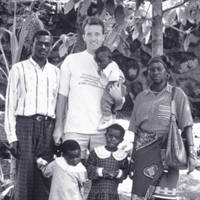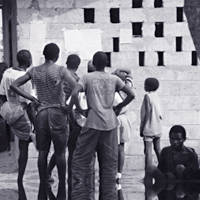|
|
|
We can’t tell the most important part of this story – who helped us investigate the massacre of Rwandan refugees in the former Zaire. We can’t even tell how we were helped. The Congolese government has so brutally repressed its citizens’ independent voices that any details could put someone in danger. As you read, then, try to imagine what we haven’t told.
In 1997, we sent a mission to the former Zaire, now the Democratic Republic of Congo (DRC), responding to rumors of atrocities emerging from several regions. At the time when the crimes took place, several forces were moving across the country: the Rwandan Patriotic Army (RPA) and the Alliance of Democratic Forces for the Liberation of Congo (ADFL), both working their way toward the capitol; the army of then President Mobutu Sese Seko, fleeing these factions; and former Rwandan soldiers and militia, implicated in the Rwandan genocide and also in flight. The ADFL’s nominal leader, Laurent Kabila, took control of the country in May.
By summer, the international community – eager to begin the flow of aid to this untested leader – seemed to wish never to know what had happened in the chaos of retreating and advancing armies. After consulting our contacts in the region – those we cannot name – we decided to attempt to provide the evidence that would make it impossible for the world not to know.
Our researcher, Scott Campbell, first conducted interviews in Eastern Congo of witnesses who had fled the violence. Then, with our contacts pointing the way, he headed for a region that had seen some of the killing – one we have never named. He traveled alone, inconspicuously, sometimes with assistance from unexpected quarters. His destination was an 80-kilometer stretch of road that passed through three villages. Rwandan refugees and soldiers from all sides had traveled the road some months before. Scott arrived at a place accessible “by motorcycle and machete,” to find its inhabitants traumatized by the crimes they had witnessed. Despite their fear, and at great personal risk, certain brave people did tell what they had seen.
According to the villagers, all forces had committed some abuses, including theft, beatings and rape. The ADFL and RPA, however, had perpetrated greater crimes. Using knives, machetes and bayonets, the troops had killed civilian refugees – perhaps hundreds in this small area – mainly men, women and children too weak to flee. Scott photographed the fresh depressions that marked the mass graves, and the remains of still-unburied bodies on the roadside.
To protect the witnesses, Scott burned his notes each night, after typing them into his laptop, into a hidden and encrypted file. On the way out of the region, he entrusted whatever written material he had to safe couriers.
Our report on this mission, What Kabila is Hiding, drew media attention around the world. Our evidence pushed the U.N. not to give up its own planned investigation of the massacre. Our findings also forced the international community to re-evalute the friendship and aid it had begun to offer to Kabila’s government.
Events have borne out the caution we raised. Kabila’s repressive policies have led most of his early defenders to withdraw support. The U.N. gave up its investigation in April, making it likely that our report will long remain the most complete information on this monstrous time. The evidence we communicated to a horrified public has made it impossible for the world to deny that terrible things happened in Congo. Someday, we may be able to add the names and faces of all those who helped us make this risky mission possible; then, the full story will be told.
 |
Scott Campbell (center) and friends in the former Zaire
|
 |
Rwandans seeking refuge in The Republic of Congo (Brazzaville) |
|
|